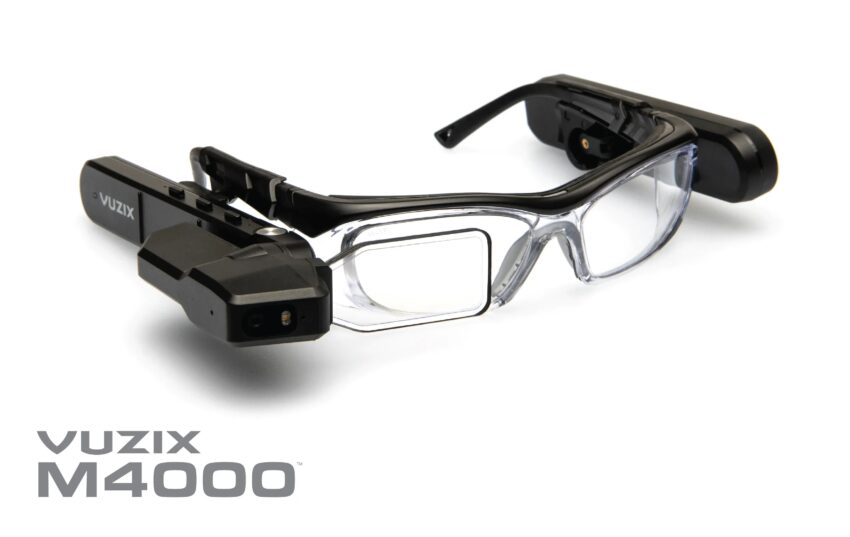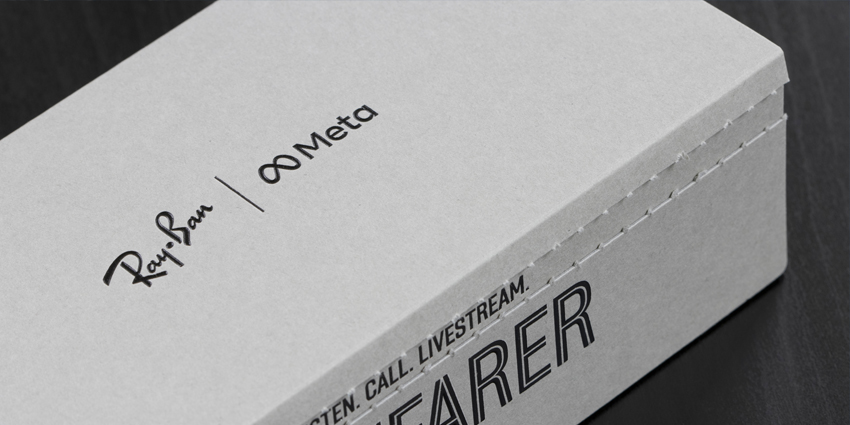For years, companies like Vuzix have backed the medical industry with their cutting-edge augmented reality (AR) smart glasses. Their dedication to empowering industries such as medical, manufacturing, remote guidance, and training has led to expansive partnerships with global firms.
Empirical data from Vuzix’s collaborations and ventures has led to a series of reports evidencing respective use cases for its technologies. These insights have proved indispensable for its commitment to growth and innovation.
Paul Travers, President and Chief Executive, Vuzix, spoke to XR Today about his company’s recent medical use case report. He then segued into updates on Vuzix’ smart glasses like the M400 and M4000 series and their role in enhancing productivity across verticals.
The top executive previously worked at Eastman Kodak’s research labs. Following a decades-long career with the photography giant, he developed the world’s first VR head-mounted display (HMD) firm, Forte Technologies.
His products led to one of the world’s first VR gaming companies but he later migrated to defence solutions. This allowed Special Forces to control and monitor situations remotely using robots and Oakley-styled headsets.
Detailing his experiences, Travers said,
“Over the years, we’ve learned that if you make something big, bulky, heavy, and uncomfortable to wear, people won’t adopt it. You may use it for an hour, but you’ll never survive a full day of [warehouse] picking or an eight-hour surgery in an operating theatre”
His company’s smart glasses feature ultra-lightweight form factors around 2.8 ounces and 4K displays to broadcast high-resolution content. Additional specifications include an IP67 rating for antibacterial cleaning and all-day use.
Vuzix Reports on Medical Smart Glasses
Regarding highlights from the company’s latest medical report, Travers explained that it aimed to determine “where the market was” and how XR adoptors perceived using smart glasses in operating theatres.
It also aimed to expand awareness of XR medical equipment, conduct market research, and better address the use of emerging technologies, he added.
A recent survey by @Vuzix highlights that 49% of surgeons are acknowledging the integral role of AR in enhancing efficiency and precision during surgeries.
Full report: https://t.co/hkOOHtVtLf#MedTech #DigitalHealth #AugmentedReality #smartglasses #telementoring pic.twitter.com/TrHG3ypUfZ— Rods&Cones (@RodsCones1) July 10, 2023
The report also explored numerous use case considerations, such as current and future sentiments, expectations, and applications.
Travers explained further,
“We have very large companies like Medacta, Johnson and Johnson, and others using them. Those applications range from knee to shoulder surgery, and I must know the device is aligned appropriately before putting the pins in. Those kinds of things are fundamental parts of the operation rather than accessories”
Vuzix’s smart glasses could perform surgeries similar to Pixee Medical operations, with the glasses measuring mechanical superstructures for holding pins before their application.
Additionally, medical technicians and experts can join operations without their physical presence in the operating room, complete with HIPAA-compliant software.
He added that individual medical professionals can log in via the smart glasses, receive remote instructions on their displays, and monitor surgical progress in the operating room as remote team instructions. Reports also noted AR-based instruction for medical procedures such as open heart surgery, freeing up space in operating rooms.
“[As the surgeon is] looking down into the chest cavity, there’s no space for somebody to look over his shoulder to see what he’s doing,” Travers said.
He continued,
“With our glasses on, he can stream HIPAA-compliant content to 500 students simultaneously. Doctors can talk him through the operation and explain everything that he’s doing, and it’s literally the catbird seat that you’re seeing [everything] through the doctor’s eyes. Additionally, we work with companies like Ohana One and Doctors without Borders, where doctors at smaller local hospitals in Africa need to perform operations they aren’t familiar with. With our smart glasses, they can get an expert from New York City, San Francisco, or [Baltimore-based] Johns Hopkins to join the theatre experience. The doctor or expert can literally walk them through the operation, step-by-step”
To date, doctors have used Vuzix smart glasses to perform hundreds of thousands of operations across the world.
COVID-19 Tests Strengths and Weaknesses
Conversely, Travers addressed the weaknesses of AR smart glasses, Travers stated that the COVID-19 pandemic had accelerated medical XR adoption rates. Policies that would have normally taken years to approve and adopt were “adopted almost immediately” to solve COVID-related challenges.
“It’s gotten legs and momentum, and its acceptance level is significant,” he noted.
Furthermore, Vuzix included the M400 as the primary product, along with data from the Vuzix Blade, to determine the strengths and weaknesses of its products.
This has led to major upgrades and additional features due to collected feedback. Some included separately articulated cameras for display screens, allowing independent pointing and monitoring.
How Does the Competition Stack Up?
Travers explained how Vuzix received medical certifications for its smart glasses more quickly due to already having key components that doctors use for their surgeries. These involved high-visibility flashlights, magnifying lenses, microphones, and other devices.
Compared to Google Glass, Microsoft’s HoloLens 2, and the Magic Leap 1 and 2, Vuzix’s products operated with an eight-hour charge, compared to rivals.
Travers said,
“We didn’t design them for the operating theatre environment per se, but were designed to be worn and used in the real world. This includes anywhere from hardhat use, to people in warehouses, and others. [Our products] naturally fit with the equipment people use in their daily lives”
For the Vuzix M4000, users could access occluded visuals for a picture-in-picture effect via the device’s waveguides. Doing so offers a significantly enhanced experience compared to the M400. Manufacturing for device components took place at the company’s Rochester, New York headquarters.
APIs and SDKs: The Bespoke Enterprise Smart Glasses

For application programme interfaces (APIs), Travers explained how the Vuzix M400 and others run on bespoke versions of Android 11. Also, the company provided best-in-class support, including security patches, support for components, and voice, tracking, and audio upgrades for out-of-the-box compatibility.
He continued that Vuzix’s APIs and software developer kits (SDKs) allowed users to write “anything you want” for the devices. For example, companies writing inspection software for their tablets could easily build cross-compatibility with Vuzix headsets. This would provide “hands-free versions” of the inspection software used on their tablet, now on the Vuzix smart glasses, Travers stated.
The CEO continued,
“When you’re moving boxes in the real world, a very large portion of mobile workers use their hands to get their job done, and that’s where [our smart glasses] really shine. The special software, tied to our APIs, SDKs, and other things freely available on our website, are also backed by a team ready to assist users with their questions”
Travers added that writing software for Android platforms did not require much assistance as it was “pretty cut-and-paste easy to do.” However, for multiple use cases such as warehousing, inspection, and medical applications, businesses and institutions could leverage software support.
Concluding, Vuzix offered support for independent service providers (ISV), providing collaborative care for respective industries via partner networks.







